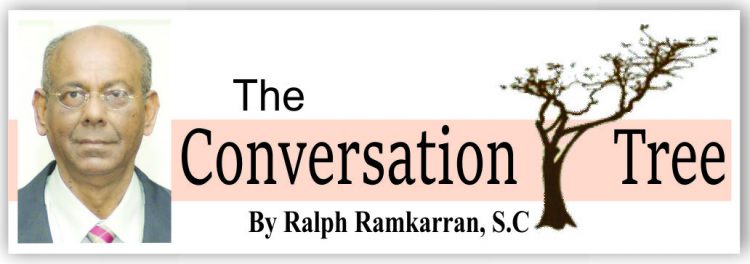
My once extended family, now reduced only to my own as a result emigration, has had a presence in Old Bel Air continuously since 1875. Up to the 1950s, along with Blygezight which we always considered to be part of the same community, it was one of the few populated areas east of Campbelville and Subryanville with a few dozen modest dwellings, farmlands and bush. There were only two red brick roads and many mud dams, all of which are now paved. Some trenches were clean enough to swim in, fish could be caught in others by castnet or ‘shying,’ cricket was played by boys on open land, fruit trees proliferated in every yard and farm, roosters crowed and birds sand in the morning and filled the sky in the late afternoons, in the early evenings crickets and frogs celebrate with cacophonous jubilation the departure of the sun and the arrival of the cool comfort of darkness. Although the memories are of an idyllic life, poverty was the main reality and residents worked hard to eke out a bare living, including my grandparents on both sides.
Old Bel Air, a mixed community that has always lived in harmony, was once dominated by peasants and workers but is now largely lower middle class. It is surrounded by wealthy neighbours in Bel Air Gardens, Bel Air Springs, Belvoir Court and Bel Air Promenade. These areas were described by Wikipedia as “gated communities” and “places for the rich and powerful.” Old Bel Air has now ‘developed.’ It has paved roads, indoor plumbing, no farms and fruit trees, no open spaces, no large trenches, or roosters to crow, but more houses and people and many cars. It is more impersonal.
Two relics of country life remain. Motor traffic largely comes to a standstill from early evening until daybreak, which invites a rural feeling, the atmosphere of which can be imbibed from a verandah in the evening, while bombarded by the celebratory noise of the crickets and frogs. The joyous revelry of the early morning birdsong complements the most precious parts of my day.
Men and boys still catch fish with homemade rods in the small parts of trenches that have not been filled or overtaken by bush. My 2+ year old granddaughter, who could barely say ‘fish,’ was captivated on witnessing a fishing session outside my home one afternoon, a pleasant but discordant activity among passing traffic. I will not have the gratification of walking her around the perimeter of my part of Old Bel Air, pointing out the location of her great grandmother’s farm in Belvoir Court and her great grandfather’s cow pen across the road in Old Bel Air, as I did her cousin, my now 15-year-old grandson. Her parents will not risk her walking near the dangers presented by the new four-lane road.
Last Tuesday evening senior government figures, led by Vice President Jagdeo, ministers Ashni Singh and Juan Edghill, visited that area to discuss the construction of a new four-lane road. It will start at Conversation Tree going south, along Prashad Nagar, then east into Campbelville to Dennis Street. The road will be constructed along the western end of Old Bel Air and will bring noise, pollution, minibuses, vendors, accidents and more. Many residents expressed their concerns as did I.
We did not oppose the development, but we complained about the late consultation, as mobilization of equipment has already started, raised questions of considerable importance and introduced new ideas which the government team undertook to consider. Notwithstanding the regret of the Vice President that the vestiges of rural ambience and serenity will be affected by the road, I will still look forward for as long as it exists to the birds in the mornings and the cricket and frogs in the early evening. Alas, the new road will eliminate all of the grass verges and trenches along Conversation Tree Road in which some dwelled. Concrete pathways and drains will replace the grass.
For the past thirty years, I drank beer every Saturday at the shop next door to Big G, referred to as Buddy’s, the name of the late owner, the same as Big G, watching passersby, greeting ‘villagers,’ and solving Guyana’s and the world’s problems. Regrettably, Covid-19 terminated our weekly contribution to world happiness and the new road will not enourage its resumption. Buddy’s and Big G, under different names, have been established general stores, serving the Old Bel Air community, since before I was born. I hope they survive the new road.
This column is reproduced with permission from Ralph Ramkarran’s blog, www.conversationtree.gy





